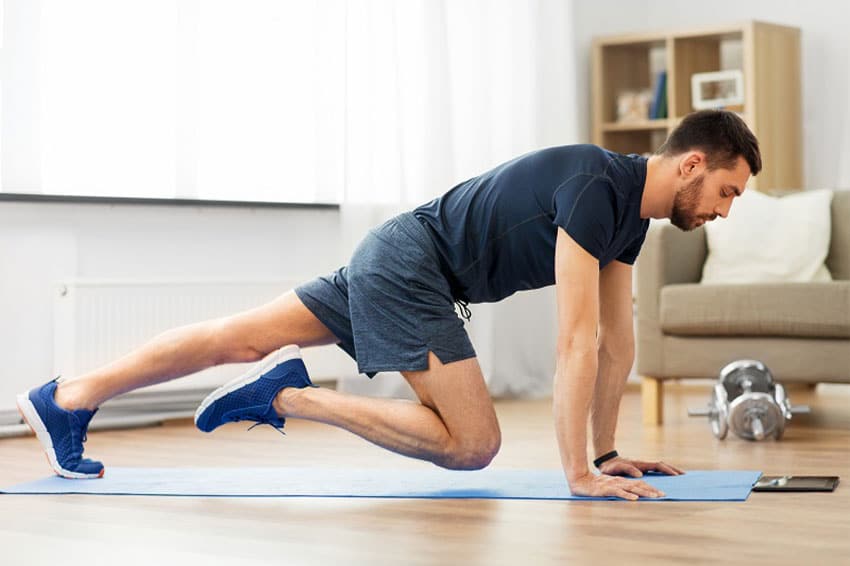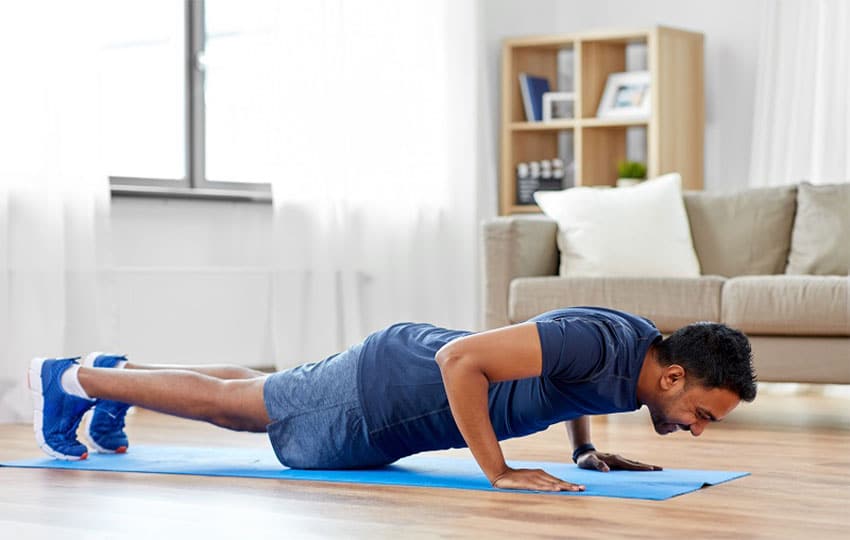Exercise and physical health can be difficult to maintain with the government guidelines that people should stay at home as much as possible.
But the prospect of self-isolating can seem daunting. How do you stay in the best shape, both mentally and physically, to get you through it?
Public Health England has said that self-isolation means you have to stay at home, not go to work, school or other public places and avoid public transport or taxis. You must also keep your distance from other people in the home.
During this time, it could be easy to drift into bad habits, spending the day sat on the sofa watching Netflix and eating unhealthy food.
Whilst this is fine on occasion, it’s likely that these social distancing and isolation measures will be in force for many months so forming healthy habits early on is important.
Staying active is crucial. Keeping your mind and body working will make isolation feel much more bearable, ensuring the time goes as quickly as possible.
Staying physically active
Exercising will help you feel better in both mind and body. Whilst going to a gym or to your regular class may not be possible, there are lots of workouts you can do at home without the need for any special equipment.
The NHS guidelines say you should be doing 150 minutes of exercise a week, which you can break down into five 30 minute sessions.
Exercises like press ups, squats, lunges and burpees require nothing more than your bodyweight and will really get your heart rate going.
There are lots of exercise tutorials available on YouTube, including Yoga and circuit training. Have a look for one that you like and that uses the equipment you have available to you, if any. It’s important that it’s enjoyable, otherwise you’ll find it hard to keep up.
There are also free video workouts available on NHS Fitness Studio and other people, such as Joe Wicks, are offering free remote workouts during the coronavirus outbreak.
Remember to listen to your body carefully. Warm up and cool down, and don’t overexert yourself. If you feel any dizziness or shortness of breath you should stop and rest, and call NHS 111 if you start to feel worse.
If you’re working from home, make sure you build in mini breaks into your day so you can get up and stretch. Sitting for more than an hour causes our metabolism to slow down.
5 Simple bodyweight exercises you can do at home
You don’t need a personal gym at home to stay fit during isolation: there are plenty of exercises that don’t need equipment, just your bodyweight.
Here we’ve listed the 5 most effective exercises you can do at home to stay fit while isolating. The good news is you don’t need any specialist equipment.
1. Plank

Planks are a great all-round exercise. They’re very effective at strengthening your core and they work your shoulders, arms and glutes too.
To do a plank, place your hands on the floor shoulder-width apart in the press-up position. Straighten your back by lifting your head slightly, focusing on a spot on the floor about half a metre in front of you. You should be aiming to hold this position for around a minute at a time.
To isolate your core further, try a forearm plank. You should follow the instructions as above, but resting your weight on your elbows with your arms out flat in front of you.
2. Lunges

Lunges are a great exercise for your legs, working your hips, glutes, quads, hamstrings and core, as well as your inner thighs.
To perform a lunge, stand up straight with your legs a hip-width apart. Take a long step forward with your right leg so that your foot touches the floor heel first. Lower your body until your right thigh is in line with the floor and your lower leg is vertical. Then, stand up by pushing your right heel into the floor so your back in your starting position.
Repeat these for 10-15 times on each leg. To make it more difficult, try holding something safely and securely in your hands to add weight.
3. Mountain Climbers

Mountain climbers are a great exercise to raise your heart rate whilst exercising your legs and engaging your upper arms and core.
Start in a high planking position, as described above, with your arms shoulder width apart. Bring your left knee up to your chest then return it to the starting position. Repeat the same motion with your right leg. This counts as one repetition. Try to keep your back straight throughout.
Repeat this for 10-12 reps. The faster you do it, the harder it will be.
4. Squats

Squats are a lower body exercise that work your legs and glutes and help to improve lower body mobility.
To do a squat, stand with your legs shoulder width apart and your feet either pointing forwards or slightly out to the side, whichever feels more comfortable. Slowly sit back, bending your knees whilst pushing out backwards, keeping your knees behind your toes.
Try to squat until your hips are lower than your knees. If you can’t get this far down then keep practising! Then stand up, keeping your back straight throughout. Repeat this 10-12 times.
5. Press ups

Press-ups are one of the most popular bodyweight exercises that are very effective at strengthening your chest, core, triceps and shoulders. As with all exercises, it’s very important that you have good form.
Place your hands on the floor, shoulder with apart. Put your feet straight out behind you, until your back is straight. The movement starts by moving your chest to the floor, then pushing back up into the starting position. Keep your hips in line with your shoulders throughout and your elbows tucked into your sides. The closer your chest gets to the floor the better.
If you find this too difficult then try them with your knees on the floor.
Challenge yourself: start by doing all exercises once; as you get stronger and more confident, you can repeat the set 3-5 times. Keep a diary and see how far you can progress.
Although we’d all prefer not to be isolated, spending your time at home productively and keeping your body active will help to keep you in the most positive frame of mind.
Eating well
As well as staying active, it’s important to continue to eat healthily, matching our calorie intake with our activity levels.
Healthy eating is always important, and ensuring you get lots of fruit and veg will keep your energy levels up and your body in its best condition. Eating lots of unhealthy food will do the opposite and could lead you to feel down and unwell.
It goes without saying that you should drink plenty of water to stay hydrated. Drinking water can make you feel more energised too, as well as ensuring your body’s working in optimum condition. It’s particularly important if you’re increasing your activity levels.
Try to make the most of it
Although it will be frustrating at times, staying active during self-isolation will make it much more enjoyable. Try to keep to a daily structure that ensures you stay alert and entertained. Remember, it won’t last forever so try to make the most of it, stay healthy and stay productive.